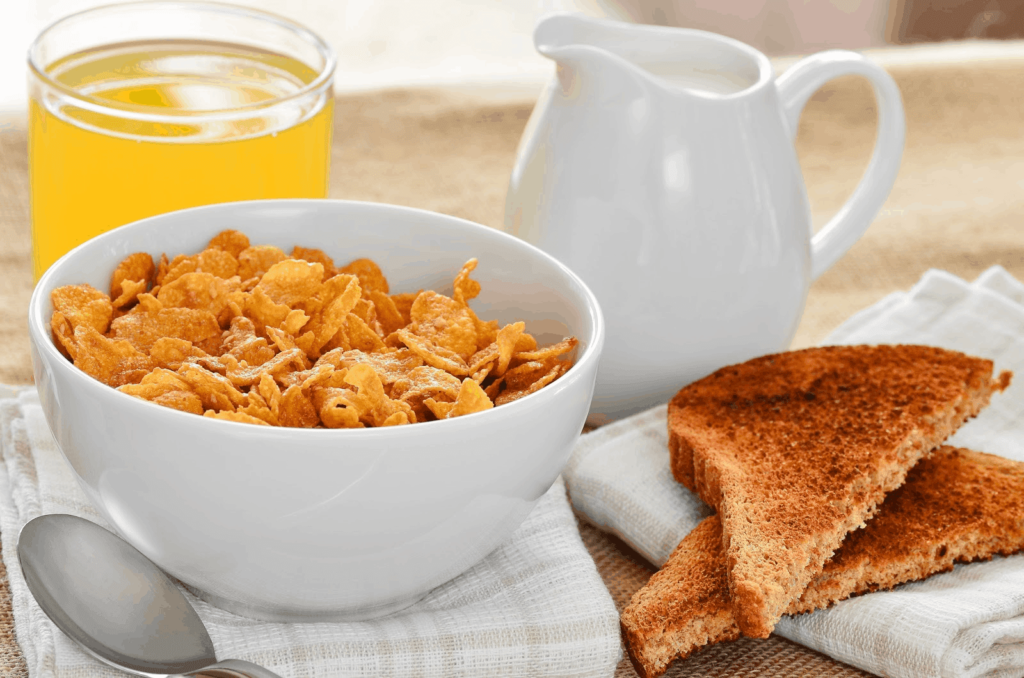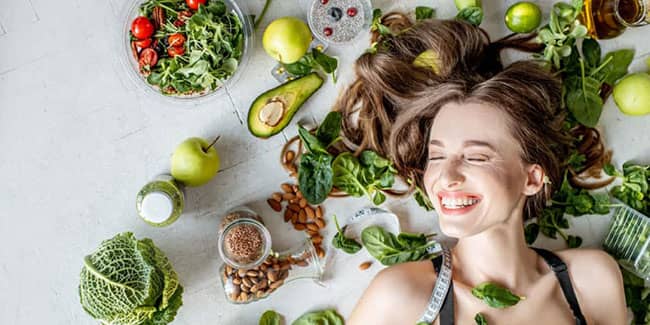We all know that eating vegetables is good for us, and many of us were likely told to “eat your greens” as a child. However, let’s face it, most children would probably prefer to eat sweets and party food than spinach and kale. On some level, we may have rejected the need to eat healthily and saw it as a chore.
These subconscious beliefs stay with us into adulthood, where we continue to associate sugar and sweet treats as exactly that, a “treat,” a comfort, something that will make us “feel better.”
Furthermore, we continue to subconsciously develop these associations and see them as further “proof” when junk food is advertised and marketed to us, claiming it will make us happy.Working with clients from royalty and rockstars to CEOs over three decades, Marisa Peer has built a stellar reputation impacting millions of lives and has shaken up the therapy industry by creating Rapid Transformational Therapy®️. Her decades of experience helping thousands of clients with their health, weight, and body issues has meant she’s also meticulously studied the association between food and its impact on our health and wellbeing. In this article, she shares the top five foods to avoid and replace to keep us healthy.

Dairy
Marisa Peer talks about milk having a growth hormone that not only tells your body to grow by 300% but has also been linked to cancer. “I use almond milk instead, which is also a great source of protein and some products claim to offer 50% more calcium than dairy milk. If you have to consume milk, try to make sure that you use organic milk where possible, to limit the amount of antibiotics and other unwanted additions.”

Sugar
Our bodies are designed to get energy from the mitochondria, which are the powerhouses in each of our cells. This requires oxygen and nutrients and is the cleanest, most efficient way of sustaining long-term energy production. Sugar, on the other hand, creates a temporary energy hit but can be toxic to our bodies. This can lead to long-term metabolic syndrome—losing control of blood sugar levels— increasing the risk of heart disease, stroke, and type 2 diabetes. Sugar is considered to be as addictive as cocaine and has a similar effect on the body.

Wheat and Gluten
Or “glue,” as Marisa Peer refers to it when she says, “The word glutinous means sticky and is an adjective derived from gluten. Gluten can have a negative effect on almost every organ in the body. It affects our mental and physical health; humans were not designed to eat wheat. The very fact that it must be milled to make it digestible is a sign that it’s not good for humans. Even if we can tolerate gluten, for many people, 70% to 80% of their diet is now grain-based cereal for breakfast, sandwiches for lunch, pasta for dinner, and cookies and cake as a snack. We eat food our ancestors did not eat in huge amounts, and that food is now heavily processed.
Marisa shares in-depth knowledge on the psychology of eating these foods. She says, “The gluten in wheat and other cereals is a big problem as it’s hard to digest and can cause allergies, fatigue, bloating, weight gain and Coeliac disease… When your baguette or pizza is broken down in your body it goes back to glue and coats your intestines with a sticky residue so that hours later if you eat some fresh berries or vegetables they will stick to this glue-like matter, this pap coats your gut, and ferments instead of being digested. As a consequence your body is crying out for nutrients not calories. You are full of food but still hungry because your body cannot get enough nutrition from the indigestible food you have put in it.”
Processed Foods and Refined Carbs
These foods have been linked to obesity, chronic illness, and disease. Marisa says, “When food is refined and processed, it is so chemically altered that our body cannot break it down properly or get nutrition from it.” Side effects from eating these foods can include fatigue, obesity, diabetes, tooth decay, arterial and heart disease, cancer, and dementia.

Margarine
Margarine is also considered one of the top five foods to avoid for healthy eating. Marisa states, “margarine is but ONE MOLECULE away from being PLASTIC.To prove to yourself just how bad for you margarine is, buy a tub and leave it in your garage or a shaded area outside. Within a couple of days you will notice that no flies, rodents or insects will go near it (that should tell you something!) You will notice that it doesn’t rot or smell, because it has no nutritional value; nothing will grow on it. Even microorganisms won’t grow on trans fats. It doesn’t decompose–why? Because it is nearly plastic. It’s about as real and healthy as the tub it came in and you wouldn’t melt it and eat that, would you?”
Vegetables
It is important to eat as many vegetables as possible, especially leafy greens and cruciferous vegetables. Variety is important as it provides diversity to the microbiome in our guts, which has a direct link to our health, as the majority of our immune system resides in our gut. It has been suggested that we should aim to eat a rainbow of veg where possible—filling your plate with as many colors as you can. Ideally, we want to aim for organic, local produce where possible to ensure it’s not covered in poisonous pesticides and toxic chemicals, which is why it is also so important to wash fruit and vegetables before eating.

Protein
Protein is important for our bodies to recover, repair, and grow, so it should ideally feature in every meal. Protein from animal sources (e.g., meat, fish, eggs, and dairy products) contains the full range of essential amino acids needed by the body. However, vegans and vegetarians can get all the amino acids they need by combining different plant sources of protein, e.g., pulses, nuts, seeds, and ancient grains.
Good Fats
The common myth is that all fat is bad for us, and we should be eating “reduced fat,” or even “fat-free,” which has been proven wrong. We need to eat fat to burn fat. However, the truth is that some fats are healthier than others. Once we start to understand the different types of fats, we can start to make healthier choices.
The Different Types of Fats

It’s Not What You Eat… It’s What’s Eating You
Eating more healthy is paramount to our wellbeing, but it is only one small part of the decisions and associations we make around our food choices in our quest for ultimate health.
Our minds are so powerful that we will do anything we can to survive. So if negative eating habits (such as overeating) have become your normal, no matter how much you educate yourself on the right foods to eat, your subconscious mind is naturally hardwired to bounce back and find what is familiar to you.
The truth is, no amount of healthy eating will give you your desired health and body unless you also train your mind to tackle the root cause.
Marisa shows us that this survival instinct goes right back to when we were born, so it is not our fault that we default to these decisions and choices. We are unaware of what creates our eating habits, and we eat with our emotions. Our conscious minds can’t access that part of our thinking, which is why we repeatedly go over the same thought patterns and eating behaviors, no matter what we try and shift externally.
So how do we change these eating behaviors for the ultimate health? When you join the 21-Day Abundance challenge, you’ll get to the root cause of any eating rituals you have through Marisa’s powerful meditations, trainings, and hypnosis audios. You will also find that you break negative habits for good and have the motivation to ONLY eat healthy foods. Marisa’s challenges enable your mind to open up brand new neural pathways so that nothing can hold you back, and making healthy choices becomes your new reality.
This is why thousands have been transformed by Marisa’s challenges. People who have been stuck in that vicious cycle of dieting, exercising, calorie counting, binge eating, starving themselves, doing punishing workouts only to find themselves in the never-ending loop of weight loss and gain or health issues. These are people who had tried every single diet and regime out there—from fads, fasting, and feasting to nutritionists and health coaches—but still not getting the results they wanted.
When you join the 21-Day Abundance Challenge, you join a thriving community, all ready to help keep you accountable on your ultimate health path. Marisa will guide you through the proven tools and techniques to be able to love yourself, feel amazing about your health choices, and believe in your potential to transform your health forever. In addition, the live element means you can have direct access to Marisa to ask those all-important burning questions.
You have the power to change your relationship with food and say goodbye to junk food and unhealthy eating habits.
What’s more, you’ll discover how powerful your mind is, and once you master the incredible subconscious thoughts you are capable of, the results will astound you.



